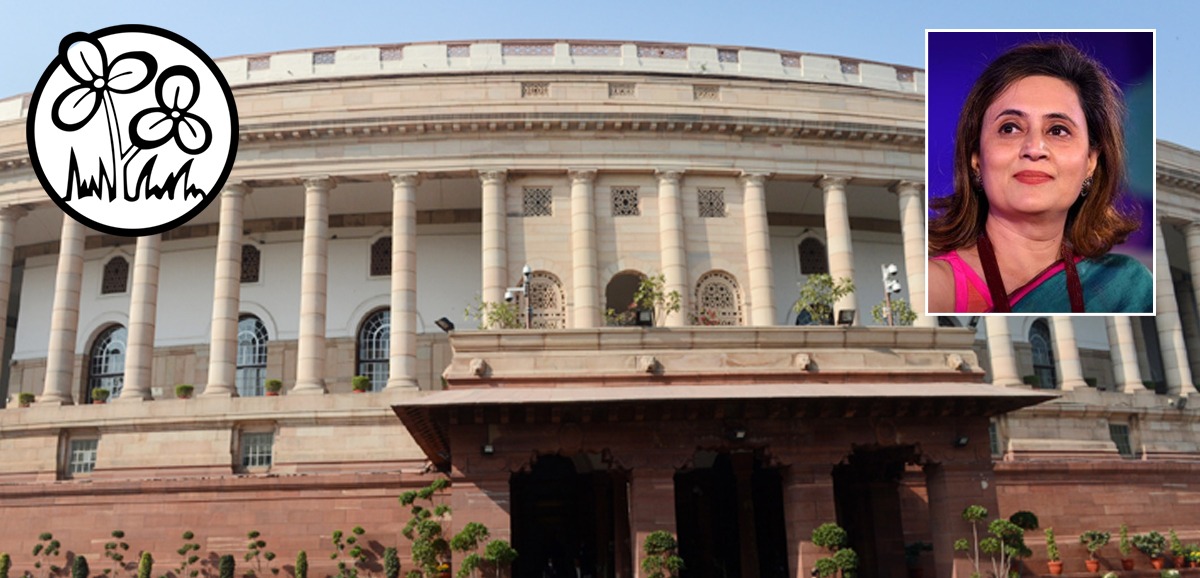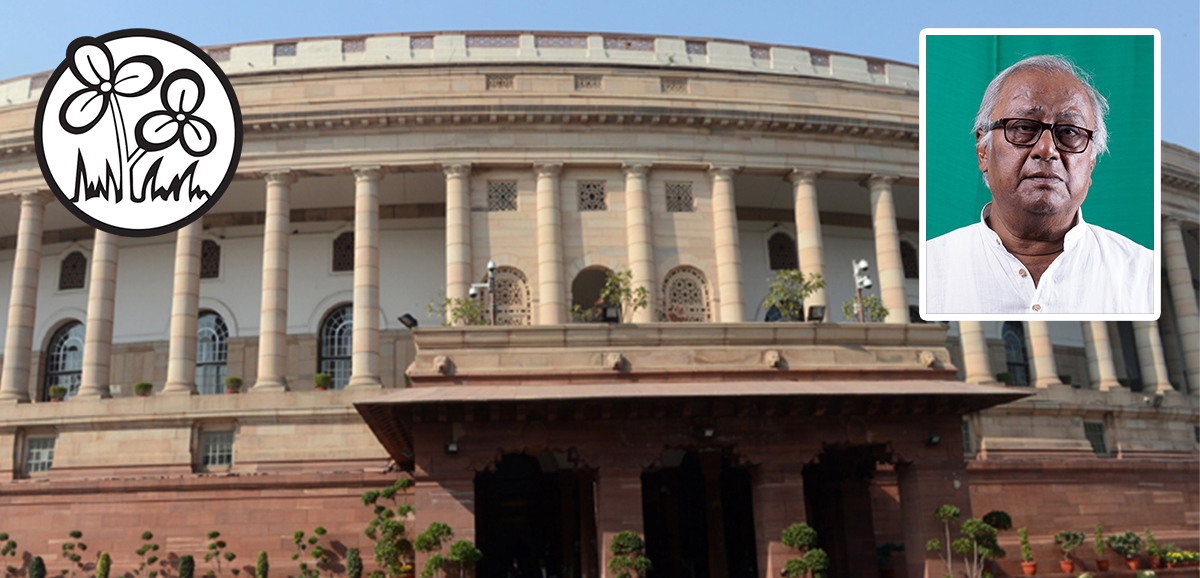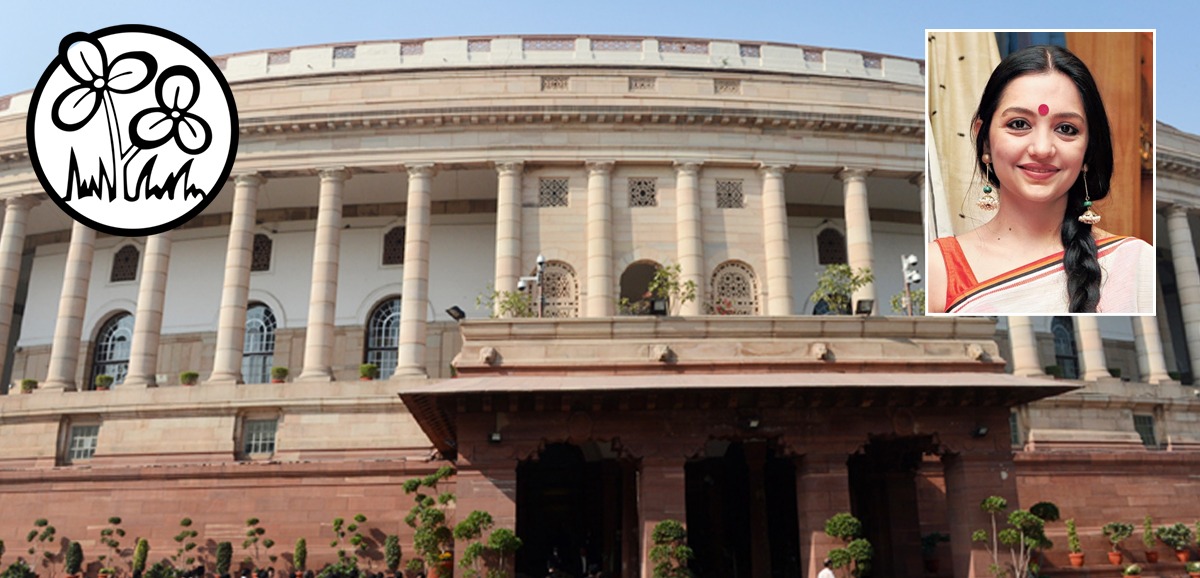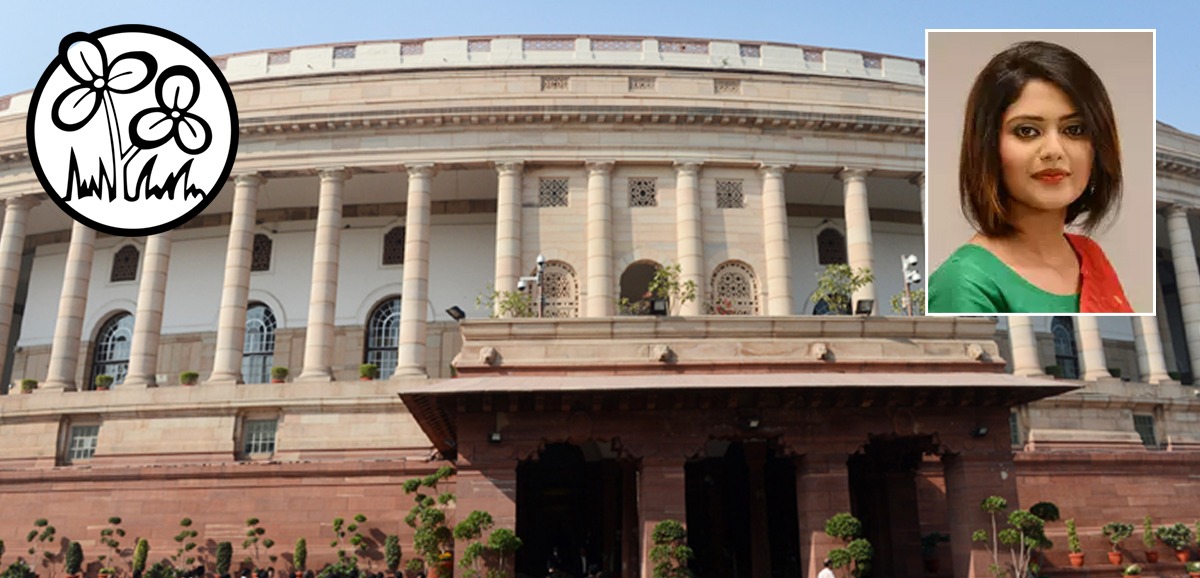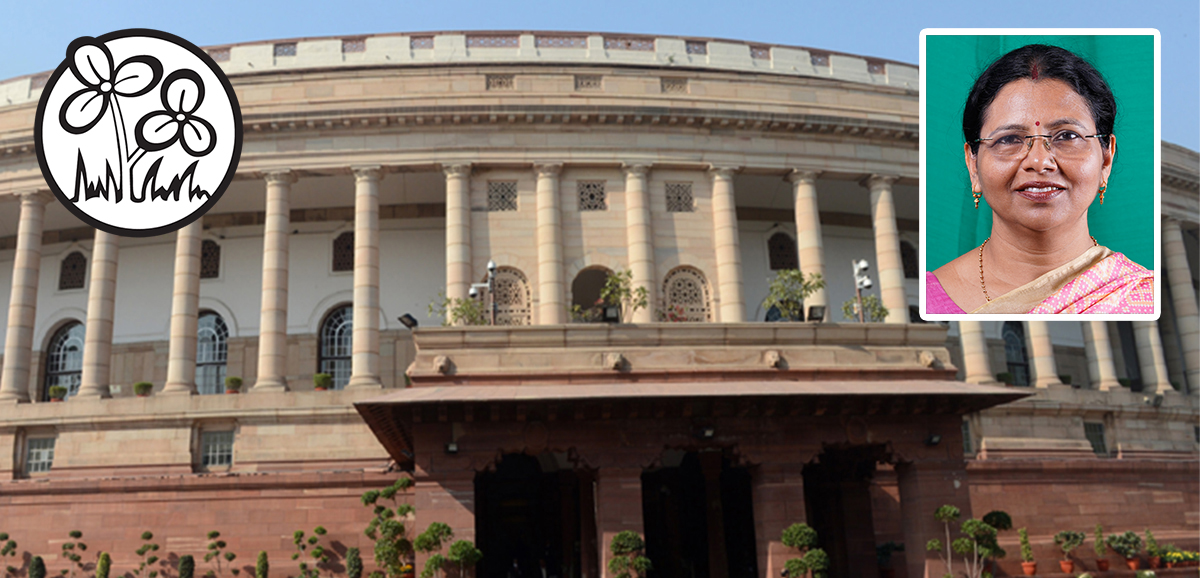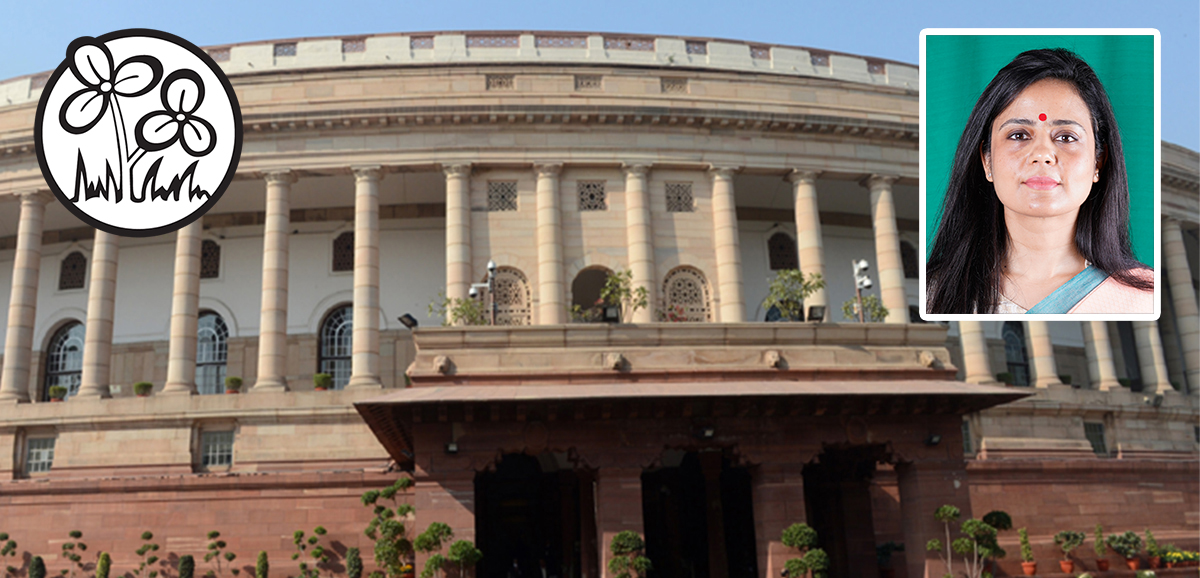Hon. Chairperson Madam, I have been allotted 18 minutes by my Party. So, I hope that I will be able to get the entire 18 minutes. I rise today on behalf of the All India Trinamool Congress to dissect and oppose the Finance Bill, 2025. Albert Einstein famously said that the hardest thing in the world is to understand income tax. Similarly, we find it very hard to understand why this Government’s taxation policy continues to widen the stark divide between the two Indias – a Kuber’s India for the elite and the privileged, and another Vishwakarma’s India for the masses who are bearing the brunt of this Government’s economic mismanagement. We have just finished the spectacle of the Maha Kumbh with faith drawing millions to the holy Sangam at Prayag. The Government is patting itself on its back for organising the grandest spectacle that humankind has ever seen. It is a small concern that the same UP Government, which was unable to count the number of deaths in the Kumbh stampedes and gave the country a number, was magically able to insist that precisely 63 crore people had bathed in the river. Now, 63 crore is the entire adult population of India, which statistically implies that every single one of us sitting here has bathed in the Kumbh. I certainly have not bathed in the Kumbh. Most of us sitting around me have not bathed in the Kumbh. But this mirage continues. This great mirage is continuing, similarly, much like the great taxation mirage that this Government has created. In December 2024, in response to a Parliamentary Question, the Finance Ministry provided certain crucial statistics on taxpayers in this country. What did we learn? We learned that there are eight crore people who file tax returns in this country. But out of that, only 56 lakh people earn more than Rs.15 lakh per annum. These 56 lakh individuals are the engine of India’s entrepreneurial and services economy. They are the only ones who are effectively paying their income tax. Now, with a new exemption structure, those earning up to Rs.12.5 lakh annually will pay zero tax. Let us be clear. Income tax is leviable only on 56 lakh people out of 140 crore population. Yet, we have a massive Income Tax Department with supernormal, snooping, police-like powers and unchecked discretion, operating under the pretence of enforcement. What is the purpose of this? The 56 lakh people at least have a graded tax system. But for the rest of India, Vishwakarma’s India, there is no relief. For the 139 crore people in Vishwakarma’s India, GST is the great equaliser, but in the most regressive way possible. In financial year 2023-24, the Government of India collected Rs.20 lakh crore in GST, which comes to about Rs.15,000 per person. So, a billionaire and a daily wage earner, both pay GST on food, on transport and on essential commodities. The Government has done nothing to alleviate this burden. There is no discussion on reducing indirect taxes on essential commodities. There is no roadmap to ensure fairer wealth distribution. All social sector spending has actually seen contractions. Let me give you a few examples. The Finance Bill mentions a health and education cess of four per cent on income tax. There is no problem. Everyone is happy to pay this if it goes in the right way. You are taking our money. It is fine. The Kothari Commission, in 1966, had said that six per cent of India’s GDP must be spent on education. The successive National Educational Policies including NEP-2020 insisted that six per cent of GDP must be spent on education. What are we spending today? We are spending around 4.5 per cent. What is China spending? China is spending 6.2 per cent. This Government’s own National Health Policy of 2017 said that public health must account for 2.5 per cent of GDP. What is this Government spending today? In the last Budget, it spent 1.94 per cent. We must be the only country with a declining spending in health. In the last few years, we have come down from two per cent to 1.94 per cent. So, Madam Finance Minister, wherever you are, I hope you are listening to me. Tax-payers do not mind paying extra cess for health and education. But, at least, spend it. Give the country what it deserves. Food subsidies have been slashed even as inflation has bitten into rural households. Between January and December of 2024, rural inflation was 5.4 per cent, a full hundred basis points higher than urban inflation, mainly driven by higher food prices. MGNREGA is still under-funded. Last year’s allocation was Rs. 86,000 crore. This year’s allocation is also Rs. 86,000 crore, even though there is a higher demand. If you pay West Bengal its Rs. 7000 crore, which is due, then, you decrease the outlay even more. This time, you have guillotined the Demands for Grants concerning the Department of Food and Public Distribution. There was no discussion. Yet, there are certain points that everyone needs to know. This country has a National Food Security Act since 2013, which mandates that 75 per cent of rural households and 50 per cent of urban households must have coverage. Today, 81 crore people are getting 5 kilograms of free rations per month by this Government. This is dependent on the 2011 Census. Now, the Government, on affidavit, told the Supreme Court that we have not had a Census in 2011 and we do not even know when the next Census is going to be. So, the Government says, well, how are you going to revise the numbers? There are many poor people who are not getting rations. The new number is: an extra 13 crore must be given rations. The Government says, ‘We do not know. We do not have a Census’. So, the Supreme Court said, ‘What do you have’? We have an unorganised migrant portal, the e-SHRAM Portal. According to the e-SHRAM portal, eight crore new people must be given rations. The Government is steadfastly refusing to give this eight-crore people rations. Please note that these people are paying GST. They are paying GST. You are raising Rs. 20 lakh crore based on these people, yet you are not giving these eight crore people rations per month according to the Food Security Act. Now, I am not comfortable with this kind of an inequity. We certainly do not want this on our conscience. Certainly not You keep saying ‘Democracy’, ‘Democracy’, ‘Democracy’. The hon. Prime Minister, in a podcast, all over the world, was talking about freedom to criticise and democracy and democratic processes. We welcome it. But for a democracy to function, it is vital that its electoral processes be above board and above question. The Legislative Department in the Law Ministry is the nodal Department which controls all spending for elections, for polls, and for appointment of the poll members. The hon. Finance Minister, this year, allocated Rs. 300 crore for voter ID cards; allocated Rs. 600 crore for election expenses; and allocated Rs. 19 crore for EVMs. But here, we have an Election Commission that is refusing to give 100 per cent VVPAT paper trails. It is refusing to make 17C forms public. It is refusing to give us new additions and new deletions to the voter list. It is refusing to explain how duplicate EPIC cards are being issued in Murshidabad and Gujarat. So, spend tax-payers’ money but use it in a right way. We need some answers. Now, let us examine the myth and reality of this Government’s growth story. The hon. Finance Minister claimed that India will grow at 6.5 per cent next year. This forecast, by the way, is downward from 9.2 per cent predicted in 2023- 24. Just before he became the RBI Governor, former Revenue Secretary, Sanjay Malhotra, in December, warned Government’s tax officials that they should not kill the proverbial golden goose with their demands. Net foreign inflows fell to Rs. 1.2 billion between April and December, down from Rs. 7.8 billion. Private investment is weak, manufacturing is stagnating at 17 per cent of GDP and rural unemployment is nine per cent. Fiscal deficit has come down to 4.4 percent, agreed, but that has not happened because of revenue growth. That has happened because you have cut essential spending to the poor. This is economic mismanagement, not fiscal prudence. The Government’s obsession with corporate incentives has only favoured big businessmen where small businesses and labourers have got hurt. You slashed corporate income tax in 2019 from 30 per cent to 22 per cent. Has private investment picked up? No. So, who have these tax cuts benefited? Let me look at just one example. Let us not forget that all tax rules are written for Vishwakarma’s India, not for Kuber’s India, not for favourite businessmen. When it comes to crony capitalists, there are special rules. Please listen. In 2016, there was a rule that there can be no SEZ which has only a power plant; no power plant, only SEZ. But for a very special friend, Mr. A, this was done in Godda, Jharkhand. Mr. A received not only billions in benefits during capex phase but receives an ongoing benefit of no import duty for importing coal, no coal cess, no domestic supply obligation. Savings of clean energy cess were Rs. 320 crore per annum. Customs tax and GST benefits were another Rs. 2000 crore. Now, the things with Bangladesh have soured. The Government has said you can sell power domestically but have you recovered the back interest and the taxes which were meant for the SEZs? The plant was built by a Chinese contractor with Chinese equipment, customs duty free, GST free, tax free, not using Jharkhand coal, not giving Jharkhand power, not paying clean energy cess and currently, employing less than 1000 people. For some people, rules, laws and Acts are nothing. ‘गरीब लहरों पेपहरेनबठाए जातेहैं, समन्दरों की तलािी कोई नहीं लेता।’ Stock market investors, corporates, small business owners have all become victims of the worst kind of tax terrorism. According to last Budget receipt of July, 2024, total income tax under dispute was Rs. 10.5 lakh crore. This figure has doubled from Rs. 5 lakh crore in 2015 to Rs. 10.5 lakh crore now in 2023. So much of promise for eliminating tax terrorism was made. When you are looking at the CBDT’s action plan for 2024-25, it gives us data on pending appeals. It is telling us, every year, there are more pending appeals than appeals which are being disposed of. So, what kind of dispute resolution are we managing? It is estimated that there are six lakh pending appeals today. The Indian IT department has followed an adversarial approach. It unnecessarily pursues all appeals at all levels regardless of outcome and for all your department officials, there is absolutely no penalty on pursuing frivolous regulations. तो कहीं भी, कुछ भी केस लगा दो। As a result of these bad drafting of tax laws, different interpretations and High Courts are providing divergent opinions, there is confusion. The Judiciary simply cannot handle this mountain of pending appeals. More than 17.5 lakh Indians have acquired foreign citizenship of another country in the past decade. An estimated $21,300 millionaires left India in the past three years alone. ‘तमुसेदूर जानेकी ख्वानहि नहीं, पर तम्ुहारी िक़ की नज़र सेबहुत ्र लगताहै।’ This is what people are telling this Government. GST is a nightmare. You are having to wait through 100 different tax rates including cesses. Multiple rates, ensuing confusion has facilitated an alarming GST evasion of two lakh crore rupees, almost double the one lakh rupees evasion that was there in fiscal year 2023. Eighteen thousand fraudulent entries have been covered and many more are likely. Senator Barry Goldwater, the Republican Senator in the United States famously said that their Income Tax Act has created more criminals than any other Act of Government. This is really proving true in India’s case. Hon. Chairperson, the Government’s draconian taxation policies have turned our stock market into a breeding ground for tax uncertainty. Let us examine the facts. They are ming-boggling. In 2004, capital gains tax was eliminated and replaced by a 0.1 per cent securities transaction tax. In 2018, the BJP Government reintroduced 10 per cent long term capital gains tax. In 2024, this long term capital gains was hiked to 12.5 per cent. Short term capital gains was increased from 10 per cent to 15 per cent in 2018 to 20 per cent in 2025. Securities transaction tax has been hiked by 60 per cent in 2024. Corporate dividends, once taxed at 15 per cent, are now taxed at slab rates with TDS. The Government and SEBI have together destroyed wealth creation in the stock market, both domestic and foreign. Europe, the US, Singapore, etc., are aggressively attracting investors, but we are driving them away with policy arrogance and excessive taxation. The new Income-Tax Bill contains something rather alarming in the fine print. Is the Government trying to bring back electoral bonds in another shape or form? The bonds were declared unconstitutional in February 2024 by the Supreme Court. And yet, in the new Income-Tax Bill 2025, in Schedule VIII, provisions relating to the electoral bonds are mentioned. Is this legislative oversight? In which case, it is very shoddy work on your part. And if it is not oversight, then it shows that you are keeping the road open for some kind of back entry to your favourite … collection system. It is very clear Electoral bond data shows that companies with negative profits donated Rs.434 crore to the BJP. About 41 companies under investigation donated Rs.2,500 crore to the BJP. About 30 companies facing investigation donated Rs.335 crore. Madam, Finance Minister, the CBDT in your hand is an engine to spur India’s growth through transparent and progressive taxation. Please do not turn it into another … agency like the ED and the CBI, which have essentially become … for this Government. About 193 cases have been pursued by the ED, but there are only two convictions. About 97 per cent of ED cases are against opposition politicians; 23 of 25 switched to … and their cases were dropped. We are now truly in an Orwellian state. The Finance Bill does not merely focus on taxation; it gives the Government sweeping powers of surveillance under the guise of preventing tax evasion. The Government now seeks the right to monitor emails, see social media accounts, and private messages. The Finance Ministry can share this data with the Enforcement Directorate, the IT Department, and all other agencies. If 97 per cent of this country is exempted from tax, then who will the tax authorities scrutinize? Is it the poor three per cent who are actually paying taxes, who are the hardworking individuals and propping up the service sector? Instead of using Pegasus secretly, the Government is now openly spying in the name of suspicion. The new Income-Tax Bill enables the sharing of information across ten Government agencies. Is this the Government’s idea of respecting tax-paying citizens who are funding its coffers? While I always try to stick to the narrow confines of a topical debate, I am now going to take a cue from the hon. Prime Minister, who so effectively managed to speak about Vasudhaiva Kutumbakam when asked a pointed question by the US media about crony capitalists and their accountability to the law. So, I, too, am digressing to speak on an issue that has immense controversy and intrigue attached. The story is about a bundle of currency notes discovered in the outhouse of a judge of the Delhi High Court. Now the veracity of the incident is still being ascertained, but the … media has gone to town debating about the appointment of judges and how the Government of the day must have a preponderant say in the appointment process. We saw the Sushant Singh Rajput suicide case and how an innocent woman was vilified by the … media and dragged through the mud. The same thing happened in my case. Now you see this media trying to create a mahol banao. They are trying to toe the Government line to suborn the higher judiciary. Someone who cannot be named in this House, presides over a neighbouring chamber, has already added his two cents and said how he thinks that the Government should do away with the collegium system. Mark my words, just like the Election Commission has been emasculated by the Government takeover of its appointments process, this brouhaha and media plants are the beginning of an effort to bring back something like the NGAC with complete Government control and do away with the collegium system. No amount of money apportioned to the judiciary will be of any avail unless its independent character is jealously guarded. This is something that we in this House must be allowed to debate. Coming back to the Finance Bill, it is nothing but a testament to this Government’s flawed economic vision. I oppose this Bill because it taxes the wealth creators, ignores the poor, and empowers the Government with unchecked powers of intrusion. India deserves better. I end by quoting George Orwell in 1984: “Every record has been destroyed or falsified, every book has been rewritten, every picture has been repainted, every statue and street and building has been renamed, every date has been altered. And that process is continuing day by day and minute by minute. History has stopped. Nothing exists except an endless present in which the Party is always right.”
